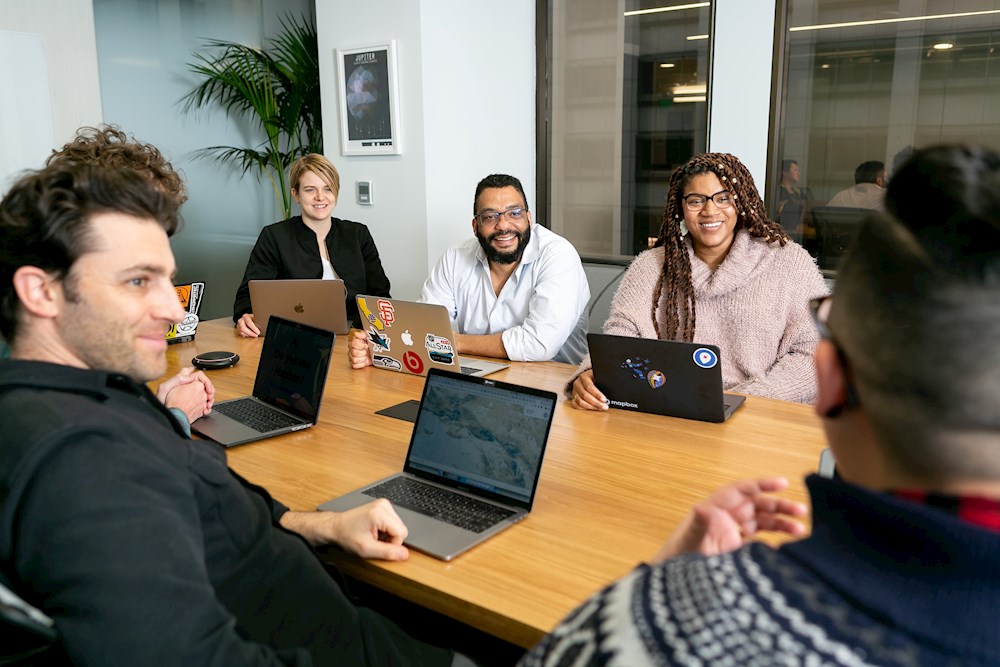- DataArts News
Harnessing Data for an Inclusive Workplace: Spring 2023 Workforce Demographics Study Results
- Posted Aug 10, 2023
5-minute read
At the heart of your organization are the staff, volunteers, independent contractors, and board members who drive the activities, artistic choices, and ability to effectively serve your community. However, many organizations don’t have a reliable, data-driven method for gaining insights into the diversity and well-being of this key group of individuals.
Earlier this year, SMU DataArts extended an open invitation for organizations across the United States and Canada to participate in our Spring 2023 Workforce Demographics Study. This study collects demographic and workplace perception information through an anonymous survey to be analyzed and reported back by our research team. With 79 enthusiastic participants, we surveyed a total of 3,358 individuals from organizations that ranged from $30,000 budgets to $3 million, represented a variety of disciplines, and multiple locations across North America.
During the study, each participating organization administered our secure, 7-minute survey. Among the 79 participating organizations, 49 reached the required participation threshold which qualified them to receive a comparative aggregated workforce report. Through feedback and conversations with these participating organizations, several themes emerged.

The Importance of Self-identification
When organizations are asked to report workforce demographic information with no reliable way to gather this information, it can lead to assumptions about perceived demographics. As Karin Watkins from the Mahaiwe Performing Arts Center explains, “I've always thought the staff and board pieces were easy - because we know those people. But do we? We think we know from what we see, but there could be a lot we don't know about gender or racial identity, and we could be making false assumptions.”
A key component of the SMU DataArts workforce demographics survey is self-reporting. Individuals provide their own demographic information via a survey that has been refined over seven years to allow as many people as possible to see themselves reflected in the response options. The survey remains iterative and evolves to keep pace with changing understandings of identity, with the goal of ensuring that all workforce members feel represented within the study, and demographic data collected is not based on assumptions.
Anonymity and Trust
Members of a workforce may be hesitant to share personal information or feedback about their wellbeing at work due to privacy concerns. The survey used in the study is anonymous, and data is only reported back to the participating organizations in the aggregate. This ensures privacy for respondents and greater accuracy and honesty in the responses. Jean Marie McKee from the Naked Angels Theater Company says, “The information gathered, because it is anonymous, gave us a clearer idea of how our workforce feels about our organization and their work within it. The knowledge will make us a more proactive organization.”
The commitment to anonymity does lead to sacrifices in other areas. For example, organizations with workforces smaller than 10 people (including staff, board, and contractors) are unable to utilize the tool for reporting on their workforce because it is not possible to guarantee anonymity with such a small sample size. In addition, organizations must reach a certain participation threshold based on their total workforce size in order to receive reporting on their organizational demographics. These thresholds are set in order to ensure that we can protect individual’s privacy, and have a high level of confidence that the percentages shared are representative of an organizations’ workforce. In the end, we accept these drawbacks because anonymity and reliability are so important for this type of data.
Segmenting for Greater Understanding
The organizational reports present an overview of the entire workforce’s combined demographics; including staff, board members, independent contractors, and organizational volunteers. Participants have expressed interest in further segmentation in reporting to better understand differences between these groups. For example, it is essential to understanding differences between staff members’ sense of wellbeing at an organization vs. that of board members in order to realistically assess inclusivity. We have been able to provide reporting on specific segments upon request to many participants, but in order to make these details available there must be enough responses within each segment to facilitate accurate and anonymous reporting. We are exploring making these breakouts part of our standard reporting for future studies, but the limitations of response rates and available data within smaller staff segments will remain a challenge.
We also understand from participants that many organizations have categories within their workforce that are very important to their internal conversations, but do not have standard definitions across all organizations. Some examples within our recent cohort include volunteer choir members, or musicians employed by the organization. We invite organizations to participate in the study as a cohort to reduce the costs to each organization participating, but this limits the ability to customize reporting based on staff roles, and can limit the utility of the information for these organization-specific categories.
Information in Action
There are a variety of ways that this information can be put to use within organizations once it is collected. Many participants have cited plans to share their report publicly to promote transparency along with satisfying grant reporting requirements or to prompt strategic discussion with their board. This is the second time we have offered this opportunity for study participation directly to organizations, and based on high levels of interest in both years, we intend to conduct the study on a yearly basis going forward. Many participants have made a commitment to consistently gather this information to facilitate continued assessment over time. If you are interested in learning more about future workforce demographics study, please visit our study information page and sign up for our interest list to receive notice when new study opportunities become available.



Comments
Leave yours below.